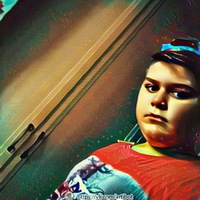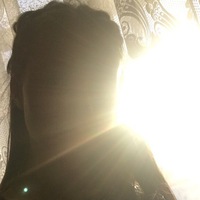
Какие амулеты и боги защищали ребёнка и его мать в момент появления на свет? Каким божествам
поклонялись простые жители Египта?Как египтяне общались с членами своей семьи, обретшими вечную жизнь на Полях Иалу, то есть, в Дуате? Для чего это было необходимо? 0
0
 0
0
Ответы на вопрос
 Внимание! Ответы на вопросы дают живые люди. Они могут содержать ошибочную информацию, заблуждения, а также ответы могут быть сгенерированы нейросетями. Будьте внимательны. Если вы уверены, что ответ неверный, нажмите кнопку "Пожаловаться" под ответом.
Внимание! Ответы на вопросы дают живые люди. Они могут содержать ошибочную информацию, заблуждения, а также ответы могут быть сгенерированы нейросетями. Будьте внимательны. Если вы уверены, что ответ неверный, нажмите кнопку "Пожаловаться" под ответом.

Объяснение:
 0
0
 0
0

Amulets and Gods for the Protection of Mother and Child
In ancient Egypt, there were several amulets and gods believed to protect both the mother and child during childbirth and throughout their lives. One such amulet was the wedjat eye, also known as the Eye of Horus. The wedjat eye symbolized healing, protection, and restoration, and it was believed to ward off evil spirits and provide protection for the mother and child.
Another amulet commonly used for protection was the ankh, which represented life and vitality. The ankh symbol was often worn by pregnant women to ensure a safe delivery and protect the child.
The goddess Taweret was also associated with childbirth and protection. Taweret was depicted as a pregnant hippopotamus with the head of a lioness and the tail of a crocodile. She was believed to protect both the mother and child from evil spirits and ensure a successful birth.
Deities Worshipped by the Common People of Egypt
The ancient Egyptians worshipped a wide range of gods and goddesses, both major and minor. While the pantheon was vast, some deities were particularly popular among the common people.
One such deity was Amun-Ra, the king of the gods and the god of the sun. Amun-Ra was believed to be the creator of the universe and the source of all life. He was often depicted as a man with a double crown or as a ram-headed man.
Isis was another widely worshipped goddess. She was the goddess of magic, fertility, and motherhood. Isis was often depicted as a woman with a headdress in the shape of a throne or as a woman with wings. She was revered for her protective and nurturing qualities.
Osiris, the god of the afterlife and the ruler of the underworld, was also highly revered. He was depicted as a mummified man or as a pharaoh holding the crook and flail, symbols of kingship. Osiris was believed to judge the souls of the deceased and grant them eternal life in the afterlife.
Communication with Deceased Family Members in the Duat
The ancient Egyptians believed in an afterlife and the existence of the Duat, the realm of the dead. They believed that deceased family members who had attained eternal life in the Duat could still communicate with the living.
To communicate with their deceased family members, the ancient Egyptians relied on various rituals and practices. One such practice was the offering of food and drink to the deceased. These offerings, known as funerary offerings, were believed to sustain the spirits of the deceased and maintain their connection with the living.
The ancient Egyptians also believed in the power of funerary texts, such as the Book of the Dead, which contained spells and instructions to guide the deceased through the afterlife. These texts were often inscribed on tomb walls or written on papyrus scrolls and placed in the tomb with the deceased.
Additionally, the ancient Egyptians believed in the importance of funerary rituals and ceremonies. These rituals, performed by priests and family members, were believed to help the deceased navigate the challenges of the afterlife and ensure their eternal well-being.
The communication with deceased family members in the Duat was considered essential for the ancient Egyptians as it allowed them to maintain a connection with their ancestors and seek their guidance and protection in various aspects of life.
Note: The sources provided do not have specific titles or authors.
 0
0
 0
0
Похожие вопросы
Топ вопросов за вчера в категории Другие предметы
Последние заданные вопросы в категории Другие предметы
-
Математика
-
Литература
-
Алгебра
-
Русский язык
-
Геометрия
-
Английский язык
-
Химия
-
Физика
-
Биология
-
Другие предметы
-
История
-
Обществознание
-
Окружающий мир
-
География
-
Українська мова
-
Информатика
-
Українська література
-
Қазақ тiлi
-
Экономика
-
Музыка
-
Право
-
Беларуская мова
-
Французский язык
-
Немецкий язык
-
МХК
-
ОБЖ
-
Психология
-
Физкультура и спорт
-
Астрономия
-
Кыргыз тили
-
Оʻzbek tili





















